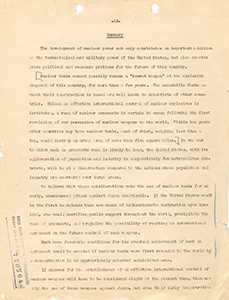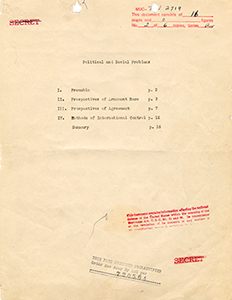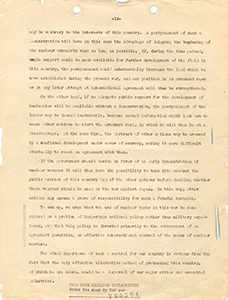Drafted by scientists from the Manhattan Project prior to the decision to use the bomb against Japan, “The Franck Report” was addressed to the U.S. Secretary of War. The memorandum argues that the use of nuclear weapons on civilian targets would inevitably lead to an international arms race detrimental to the United States’ security. It also notes that:
“(…) the military advantages and the saving of American lives, achieved by the sudden use of atomic bombs against Japan, may be outweighed by the ensuing loss of confidence and wave of horror and repulsion, sweeping over the rest of the world, and perhaps dividing even the public opinion at home. From this point of view a demonstration of the new weapon may best be made before the eyes of representatives of all United Nations, on the desert or a barren island. The best possible atmosphere for the achievement of an international agreement could be achieved if America would be able to say to the world, ‘You see what weapon we had but did not use. We are ready to renounce its use in the future and to join other nations in working out adequate supervision of the use of this nuclear weapon.’”


